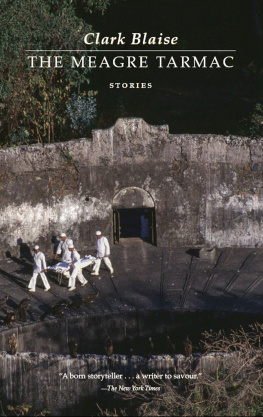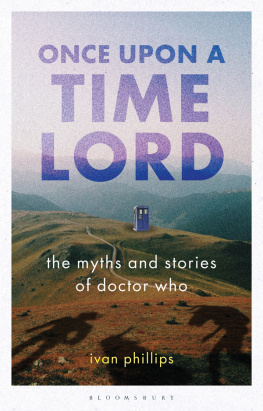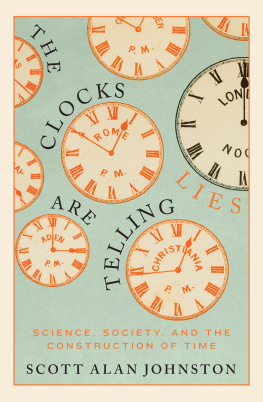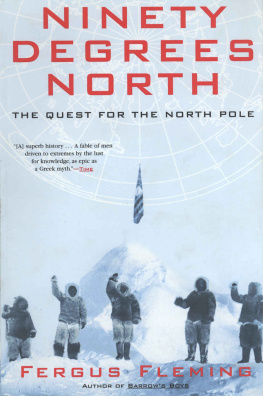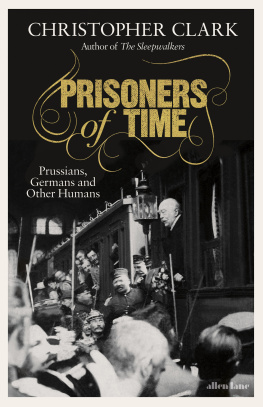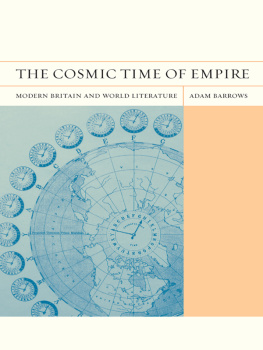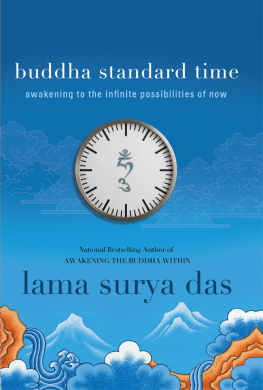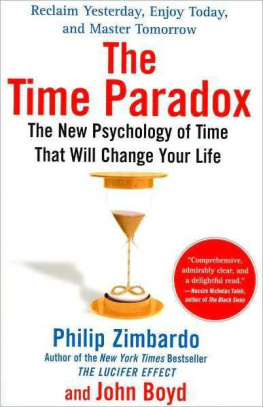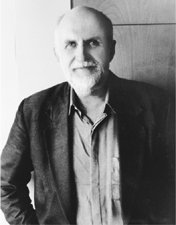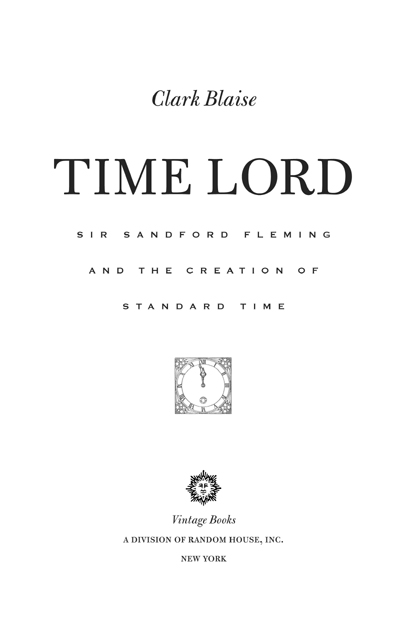Acclaim for Clark Blaises
Time Lord
Splendid. Theres something sparkling and wonderful about how smoothly and surely Clark Blaise links the intellectual materials of science, social history and the arts.
The Oregonian
The book charms and fascinates. Inspired by affinity and curiosity, Blaise delivers.
The Hartford Courant
An important history of ideas. Blaise writes with perfect pitch and graceful narrative.
Publishers Weekly (starred review)
Fascinating. Blaises style in this compelling narrative is lively and witty.
BookPage
Time Lord is one of those rare books that successfully brings to a broad readership compelling ideas generally buried in academic articles. [With] lustrous and elegant prose, Blaise tells the story of how standard time quietly revolutionized the Western understanding of self and society.
The Edmonton Journal
Blaises elegant little work is a dazzling meditation on social change.
Macleans
ALSO BY CLARK BLAISE
Story Collections
A North American Education
Tribal Justice
Resident Alien
Man and His World
Brief Parables of the Twentieth Century:
New and Selected Stories
Novels
Lunar Attractions
Lusts
If I Were Me
Non-Fiction
Days and Nights in Calcutta
(with Bharati Mukherjee)
The Sorrow and the Terror
(with Bharati Mukherjee)
I Had a Father: a post-modern
autobiography
Here, There, and Everywhere: American,
Canadian, and Post-Modern Literature
CLARK BLAISE
Time Lord
Clark Blaise, former head of the International Writing Program at the University of Iowa, lives in San Francisco with his wife, Bharati Mukherjee. Time Lord is his sixteenth book.
FIRST VINTAGE BOOKS EDITION, APRIL 2002
Copyright 2000 by Clark Blaise
All rights reserved under International and Pan-American Copyright Conventions. Published in the United States by Vintage Books, a division of Random House, Inc., New York. Originally published in hardcover in Great Britain by Weidenfeld & Nicolson, an imprint of Orion Publishing Group Ltd., London, in 2000, and subsequently in hardcover in the United States by Pantheon Books, a division of Random House, Inc., New York, in 2001.
Vintage and colophon are registered trademarks of Random House, Inc.
Grateful acknowledgment is made to Scribner, a division of Simon & Schuster, for permission to reprint an excerpt from Sailing to Byzantium from The Collected Poems of W. B. Yeats, revised second edition, edited by Richard J. Finneran. Copyright 1928 by Macmillan Publishing Company, copyright renewed 1956 by Georgie Yeats. Reprinted by permission of Scribner, a division of Simon & Schuster.
The Library of Congress has cataloged the Pantheon edition as follows:
Blaise, Clark.
Time lord : Sir Sandford Fleming and the creation of standard time / Clark Blaise.
p. cm.
Includes bibliographical references
eISBN: 978-0-307-76655-7
1. TimeSystems and standardsHistory. 2. Fleming, Sandford, Sir, 18271915. I. Title.
QB223.B58 2001 389.1709dc21 00-058893
Author photograph Jerry Bauer
www.vintagebooks.com
v3.1
To John and Myrna Metcalf
Contents
PART ONE
A (Very) Brief History of Time
PART TWO
Time Was in the Air
PART THREE
After the Decade of Time
Foreword
THE GAUGE AGE
NATURALISTS AND PSYCHOLOGISTS believe that of all forms of animal life, only man possesses a sense of time. It may be our defining characteristic. The historian of ideas Daniel J. Boorstin devotes the first three chapters of The Discoverers to time and the history of its measurement, because nothing is more fundamental to our nature than the observation of time and the struggle to measure it accurately. Without an agreed-upon standard of time, we cannot mark or measure change. There can be no innovation, no discovery. Like Robinson Crusoe notching a stick, or prisoners in the Gulag scratching a line for every day of their confinement, we are embedded in time. Even when we leave society behind, our very sanity depends on periodicities. What day is it? How long have I been here? The way we know time today has a great deal to do with the creation of standard time, and the man this book, in part, celebrates.
His name fades with each new generation, although plaques and memorials abound. A college and a few secondary schools are named for him, but fifty or sixty years ago, Sir Sandford Fleming would have won the possibly self-ironizing title of outstanding Canadian of the nineteenth century. Born in Scotland, in the manufacturing town of Kirkcaldy, in 1827, the son of a local contractor, he received his six years of formal education in the town (burgh) school, and then apprenticed himself another six years to the local land surveyor, John Sang. In 1845, at the age of eighteen, he and his older brother sailed for Canada. A cousin presented him at the docks with a silver sovereign. His father entrusted to him a valuable watch with a built-in sundial, an emblem of the time system he would eventually overthrow. The ticket to his future on the sailing ship Brilliant cost the sizable sum of 4, for which he and his brother were guaranteed a daily quantity of drinkable water and basic uncooked rations.
In the towns and cities of Scotland, horse-drawn omnibuses made regular stops, their painted sides announced their final destinations. Glasgow Docks, it might say, with train connections to Liverpool to meet all sailings. The young men whose wooden trunks contained meager treasures of books and professional instruments, the tins of flour and tea, and the bedding, were headed for Canada, South Africa, New Zealand, and Australia. Some chose the more alien challenge of the United States. Emigration was the inescapable destiny of the bright and enterprising Scotch, as they called themselves: populate the Empire, build the machines, run the engines, make their fortunes. The lessons of their straitened childhood and the strictures of the Presbyterian Church kept them sober and responsible for the rest of their lives.
They were the steamfitters, the boilermakers, the gauge-readers, the engineers of the world, proud of their hardiness and frugality, quick to grasp the mechanical advantage. Victorian pop psychology assigned various aptitudes to distinct races, and the Scotch were thought to have an uncanny affinity for technology. (The stereotype carried forth to our own fantasies in which Scotty worked his mechanical magic on the starship Enterprise.) Kirkcaldy, on the north shore of the Firth of Forth, across the water from Edinburgh, was also the birthplace of Adam Smith. Thomas Carlyle had served as master in the same burgh school a decade before Flemings matriculation. Linoleum was invented and manufactured in Kirkcaldy. Theres probably not a significant settlement in Scotland that could not provide a comparable list of famous sons and their useful inventions. Flemings later friend Andrew Carnegie, one of the America-bound, hailed from the nearby Fifeshire town of Dunfermline. Samuel Cunard, the shipping magnate, and the parents of James J. Hill, founder of the Great Northern Railroad, the first two prime ministers of the Canadian nation, Sir John A. Macdonald and Alexander Mackenzie, and untold bankers and businessmen, who collectively established Canada as Britains leading colony among presumed equals, had all made the same passage and adjustment from Scotland to Canada.


